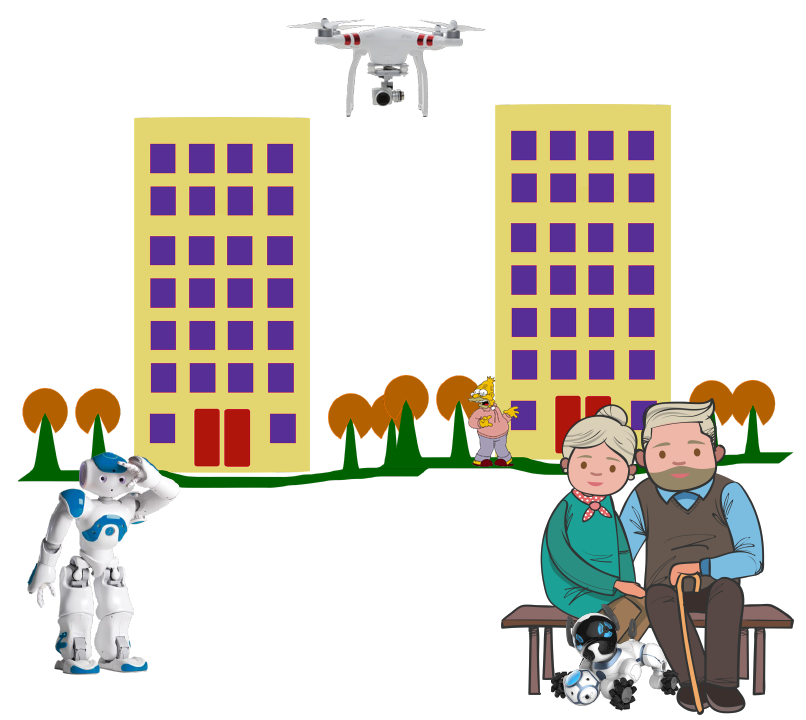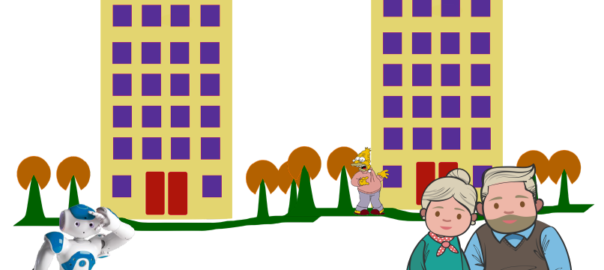Gerontology and Geriatrics
If we build them, will they be accepted? The Simpsons S31:E12 does not satirize issues about privacy and personal information – just butt wiping. [1] Might co-design and co-production of care robots improve acceptance? [2]
The crew
A team of international researchers, a model of robot acceptance, a small cross-sectional study across Japan, Ireland, and Finland.
The challenge
“Although care robots are being developed and improved at a rapid pace, their social acceptance has been limited.”

• Science Daily > “Care robots: Ethical perceptions and acceptance” by Chiba University (August 29, 2023) – The increased burden of elder care may lead to a shortage of caregivers in a decade’s time.
The global population of people older than 65 years of age is rapidly increasing the need for care. Although care robots are a promising solution to fill in for caregivers, their social implementation has been slow and unsatisfactory. A team of international researchers has now developed the first universal model that can be employed across cultural contexts to explain how ethical perceptions affect the willingness to use care robots.
Notes
[1] The Simpsons, Season 31, Episode 12 “The Miseducation of Lisa Simpson“
Listen up.
These nerds have found out something terrifying. This school was supposed to prepare you for the jobs of the future. But in the future, all the jobs we’ve learned here will be done by robots. The only job left for humans will be …
BOTH:
Elder care!(all gasping)
The one job even robots won’t do.
What about STEM?
Here’s what it really stands for.
Sponge Bathing
Toileting
Elderly
Massage[The new STEM school self-destructs when the kids’ user ratings go to zero stars.]
Yeah, but we escaped having to take care of old people.
No, that’s still the only job that’s going to exist.
Now we just won’t know how to do it.
(both groan)
[2] Adaptive programming of robot companions is dramatized in the movie Robot & Frank (2012).
… the filmmakers wanted Robot & Frank to explore the subject … technology is “not bad or good but it will change the way we relate to each other.”
Journal-writer Aino-Kaisa Koistinen … discusses how its plot and bond between the characters and robots was “…making visible the powerlessness of these old men in terms of deciding for their own care.”

Can robots bring more meaning to life? Social robots. Was there an episode about this in the TV Series Twilight Zone? (e.g., “The Lonely,” 1959) – “warm technology to enhance human connection … a feeling of social purpose and everyday joy.”
Well, there was the movie Robot & Frank (2012).
This article discusses the challenges of designing a social robot that embodies “an operational understanding of humanness” – so the robot is not creepy.
• Wired > “My Parents’ Dementia Felt Like the End of Joy. Then Came the Robots” by Kat McGowan (Jan 4, 2024) – Forget the crappy caregiver bots and puppy-eyed seals. When my parents got sick, I turned to a new generation of roboticists – and their glowing, talking, blobby creations.
[image caption] Šabanovic’s conference room at Indiana University is like a robot zoo.
Elder care. Human attention. Whether at home, at an assisted living center, or in a nursing home. The cost. The workers. Turnover. The role of technology.
My mom had in-home contracted caregivers for her last few years. During my extended visits, it always took awhile to learn all their names – posted as notes on the refrigerator. The going rate was ~$20 an hour. A relentless arithmetic.
My mom had been the primary caregiver for my dad. It really wore her out. And that’s likely the same scenario for many families – carrying the joy & burden as long as practical.
So, what’s changing? The possibilities. Better than community room TV screens, eh. With a human touch?
But first, a historical parallel: prior to the Industrial Revolution, with spinners & weavers in the British textile industry.
• LA Times > “How robots could help solve the caregiving conundrum” by Virginia Postrel (March 17, 2024) – The math doesn’t care about our feelings … is the way out of this dilemma radical technological innovation?